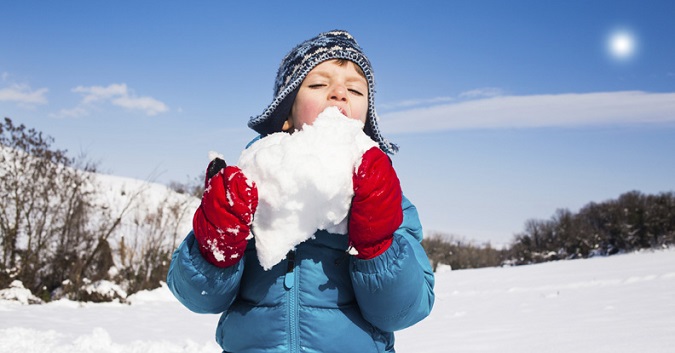You know the saying: Don’t eat yellow snow. Unfortunately, a new study published in the journal Environmental Science: Processes & Impacts, suggests that you shouldn’t actually eat any snow at all, if you can avoid it. Snow has been found to act as a rather effective sink for tiny particles that are found primarily in car exhaust fumes, so any consumption of it is effectively like eating a pollution-flavored Popsicle.
Air pollution is a killer, with 3.3 million dying each year from the inhalation of toxic, near-invisible particles, according to the United Nations. China, whose capital regularly suffers from genuinely suffocating smog, accounts for 1.4 million of these deaths. The World Health Organization is about to release a report detailing just how many have died recently from the man-made phenomenon; in previews, they are already declaring it a global “public health emergency.”
Therefore, learning about the various ways air pollutants can be absorbed by the world is important, as it gives scientists a detailed picture of how much remains in the air – breathable by nearby humans and animals – and how much infiltrates other parts of the environment, where it will have a more indirect effect on human populations. A team of researchers at McGill University in Montreal, Canada, decided to investigate the ability of snow to absorb these pollutants.

A novel environmental chamber simulating a range of snowy conditions, dubbed a “snow chamber,” was used by the team. By mixing a variety of natural snow types with a combination of pollutants commonly found in car exhausts, they were able to examine how much of the pollution escaped being dissolved or otherwise captured in the snow. Along with organic carbon, levels of toxic pollutants, including benzene, toluene, ethylbenzene and xylenes within the snow were measured before, during and after each experimental run.
The researchers found that from just one hour of exposure, the levels of pollutants within the snow increased dramatically, with toxic particles becoming trapped within the small ice particles or dissolved within pockets of meltwater. This means that snow is a particularly effective “sink” for car exhaust pollution.
As for what happens when the snow melts? The pollutants either remain in the water, or they escape back into the air – but that’s a story for another study to definitively answer.
By Robin Andrews (h/t)
Featured Image: Heath Care/University of Utah


